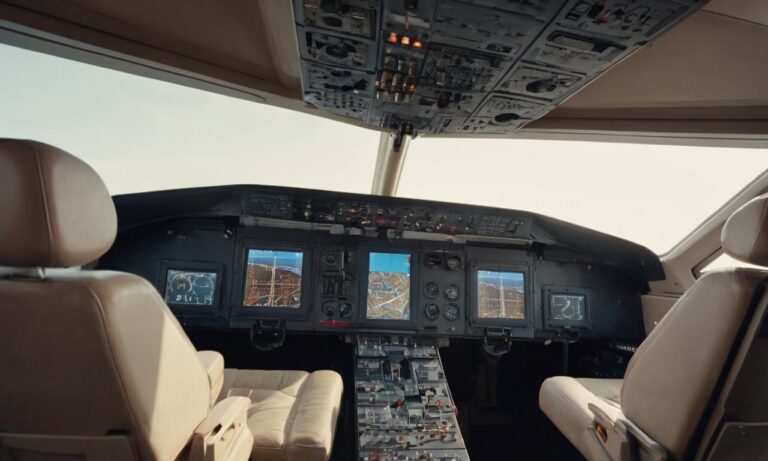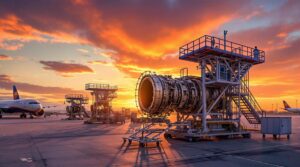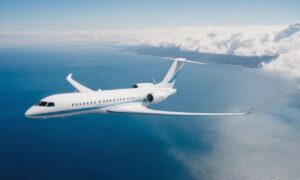Ensuring the optimal cabin pressure within an aircraft during flight is a critical aspect of aviation safety and passenger comfort. The intricate system that regulates cabin pressure involves a combination of engineering, technology, and careful monitoring.
The Basics of Cabin Pressurization
Cabin pressurization is the process by which the air pressure inside the aircraft is controlled to simulate conditions at lower altitudes, despite cruising at high altitudes where the external air pressure is significantly lower. This is crucial to prevent hypoxia, a condition caused by low oxygen levels, and to maintain a habitable environment for passengers and crew.
The Role of Aircraft Systems
Modern aircraft are equipped with sophisticated systems to manage cabin pressure. The primary components include the air conditioning packs, outflow valves, and cabin pressure controllers. These systems work together to balance the internal and external pressure, ensuring a safe and comfortable atmosphere for everyone on board.
Key Components of Cabin Pressure Regulation
Let’s delve into the key components that contribute to maintaining cabin pressure:
- Air Conditioning Packs: These packs regulate the temperature and pressure of the air that enters the cabin, ensuring it is suitable for occupants.
- Outflow Valves: Strategically located on the aircraft’s fuselage, outflow valves control the rate at which air exits the cabin, preventing pressure from becoming too high or too low.
- Cabin Pressure Controllers: These devices continuously monitor and adjust the cabin pressure to maintain a safe and comfortable environment.
Challenges and Solutions
While aircraft systems are designed to handle various scenarios, there can be challenges in maintaining cabin pressure, such as sudden changes in altitude or system malfunctions. To address these challenges, aircraft are equipped with backup systems and safety protocols to ensure the well-being of passengers and crew.
Emergency Situations
In the rare event of a loss of cabin pressure, aircraft are equipped with oxygen masks that automatically deploy to provide passengers and crew with a stable oxygen supply. This emergency measure is part of a comprehensive approach to safety in the aviation industry.
Continuous Monitoring and Advancements
Advancements in aviation technology lead to continuous improvements in cabin pressure systems. Engineers and manufacturers are dedicated to enhancing safety measures and passenger experience through innovations in materials, design, and system redundancies.
Future Trends
The future of cabin pressure maintenance in aircraft may involve even more advanced systems, such as smart sensors and predictive maintenance technologies. These developments aim to further enhance the reliability and efficiency of cabin pressure control.
Fine-Tuning Pressurization for Specific Routes
Adapting to varying altitudes along different flight routes poses challenges in maintaining consistent cabin pressure. Airlines employ route-specific pressurization adjustments to ensure optimal conditions throughout the journey. This customized approach enhances passenger comfort and addresses the unique atmospheric conditions encountered during diverse flight paths.
Environmental Impact and Sustainability
As aviation strives to reduce its environmental footprint, there is a growing focus on sustainable cabin pressure solutions. Innovations include eco-friendly materials and energy-efficient systems, aligning with industry-wide efforts to minimize the ecological impact of air travel.
| Technology | Advantages | Challenges |
|---|---|---|
| Advanced Composite Materials | Weight reduction, fuel efficiency | High production costs |
| Next-Gen Pressurization Systems | Improved control, enhanced passenger comfort | Initial implementation challenges |
| Green Pressurization Solutions | Environmental sustainability | Research and development costs |
Frequently Asked Questions
Addressing common queries about cabin pressure:
- Q: How is cabin pressure maintained during takeoff and landing?
- A: Cabin pressure is actively controlled by aircraft systems during all phases of flight, including takeoff and landing, to ensure a smooth and comfortable experience for passengers.
- Q: Are there health considerations related to cabin pressure?
- A: Maintaining optimal cabin pressure is essential for passenger well-being, minimizing the risk of hypoxia and other related health issues during flight.
- Q: What measures are in place for extreme situations, such as a sudden loss of cabin pressure?
- A: In emergency scenarios, oxygen masks automatically deploy to provide a stable oxygen supply to passengers and crew, ensuring their safety.






